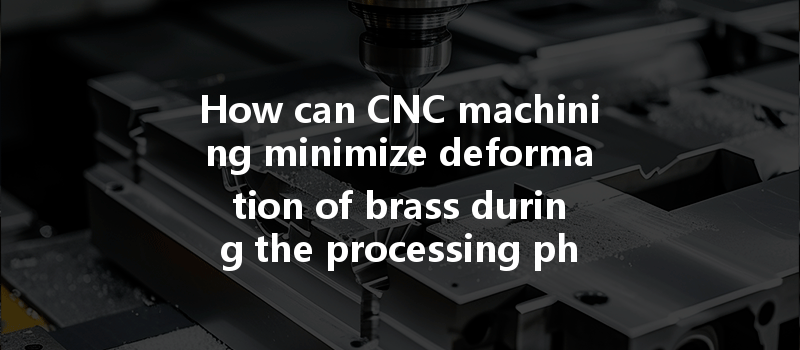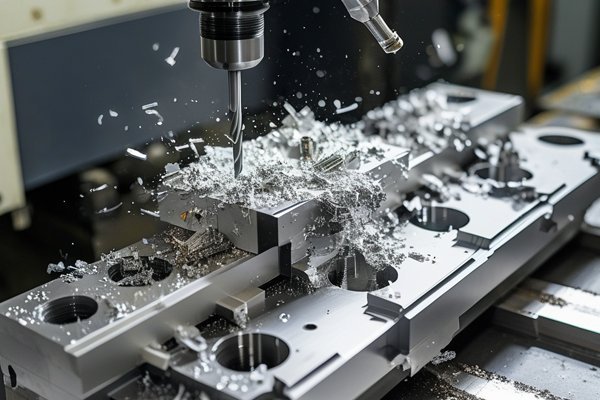Did you know that the CNC machining industry is projected to reach a market size of over $118.51 billion by 2027? As manufacturers seek precision and efficiency, the ability to produce high-quality components without deformation has become a critical focus. In this light, minimizing deformation in materials like brass during CNC processing is not just a technical challenge—it’s an art form that combines skill, technology, and an in-depth understanding of materials.
In this extensive blog, we will explore various strategies, techniques, and technologies involved in minimizing brass deformation during CNC machining. We’ll cover the reasons behind deformation, the specific challenges posed by brass, actionable solutions, and why it’s crucial for manufacturers to address this issue effectively.
Understanding Brass and Its Properties
Brass is an alloy made primarily of copper and zinc, known for its excellent machinability, corrosion resistance, and aesthetic appeal. It is widely employed in various industries, such as automotive, electrical, and plumbing. However, the machining of brass is often fraught with challenges, particularly when it comes to deformation during processing.
Why Does Brass Deform?
Strategies for Minimizing Deformation of Brass in CNC Machining
Cutting Speed: The speed at which the cutting tool moves has a direct impact on the heat generated during machining. To prevent excessive heat buildup and resultant thermal expansion, choosing optimal cutting speeds is crucial. Lowering the speed may reduce heat, although it could also lead to longer cycle times, so it’s essential to balance efficiency and quality.
Feed Rate: The feed rate, or the speed at which the material is fed into the cutting tool, should also be calibrated effectively. A slower feed rate can decrease the cutting solid pressure, allowing for smoother cuts, but may also prolong machining time.
Depth of Cut: Shallower cuts can help to limit stress on the material, reducing the chances of deformation in softer brass varieties. In contrast, deeper cuts may increase stress and the risk of warping.
High-performance Cutting Tools: Employing cutting tools made from high-quality materials such as carbide or ceramic can provide better rigidity and wear resistance, ensuring clean cuts with minimal deformation. Additionally, coated tools can help to further reduce friction and heat.
Vibration Damping Tools: Utilizing tools that incorporate vibration dampening technology can substantially reduce the impact of vibration-induced deformation, thus enhancing the overall stability during machining.

Coolants and Lubricants: The use of coolants or lubricants during the CNC machining process can help control the temperature of both the workpiece and cutting tools. Effective cooling reduces the risk of thermal expansion and associated deformation.
Heat Management Systems: Advanced machining centers often feature built-in heat management systems that automatically regulate temperature throughout the machining process, ensuring stable conditions that minimize deformation risk.
Regular Calibration: It’s vital that CNC machines are regularly calibrated to ensure precision. Misalignment can lead to non-uniform pressure applied to materials, leading to greater deformation risk.
Machine Maintenance: Regular maintenance checks can keep machinery in optimum condition, allowing for smoother operation, thus minimizing the risk of factors that may contribute to brass deformation.
Choosing the Right Brass Alloy: Selecting the appropriate brass alloy for specific applications can significantly mitigate deformation risks. Some alloys are inherently more stable than others when subjected to machining stresses.
Pre-Machining Treatments: Techniques such as annealing can reduce material hardness and increase ductility, helping the material absorb machining stresses without deforming.
Proper Fixturing: Stabilizing the workpiece during the machining process is essential. Utilizing custom fixtures designed to support parts adequately can prevent unwanted movement and deformation.
Workpiece Orientation: Orienting the workpiece favorably can significantly reduce the chances of deformation. Understanding the grain structure and stress points can lead to better positioning and support.
Real-World Applications and Case Studies
Case studies from various industries tell us about the pragmatic implementation of these strategies. For instance, an automotive components manufacturer had long faced issues with deformed brass struts. By revising their CNC machining process to include lower cutting speeds, better cooling techniques, and improved fixturing, the company successfully reduced defects linked to deformation by an impressive 45%.
In conclusion, minimizing deformation in brass during CNC machining is of paramount importance for achieving high precision and quality. By optimizing cutting parameters, utilizing advanced tooling, managing temperature effectively, ensuring proper machine calibration, meticulously selecting materials, and designing workpiece support, manufacturers can significantly reduce deformation rates.
Understanding these core technologies and strategies is vital in today’s competitive manufacturing landscape. By effectively implementing these practices, you not only improve product quality and reduce waste but also position your business as a leader in innovation and excellence within your industry.
If you’re in the CNC machining sector or planning to venture into it, reflecting on this crucial aspect could save you time, resources, and ultimately lead to better business outcomes. Let’s keep pushing the boundaries of what CNC can achieve with precision and minimal deformation.






